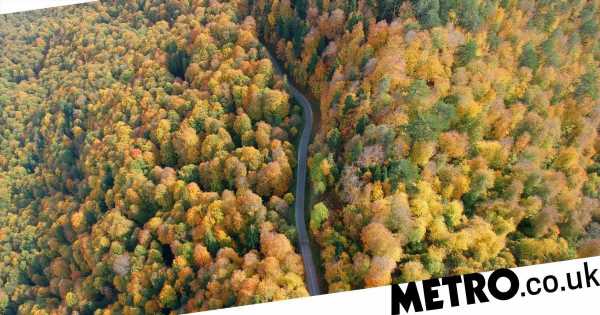Climate change is the biggest threat to humanity today. With a growing number of extreme heat waves, droughts, wildfires, floods and hurricanes around the world, its impacts is continuing to grow.
By 2030, we will have reached a point where extreme climatic conditions become the norm. Most people know we need to act, and fast, but it’s harder to understand how to do so.
Trees may be the oldest trick in the book to fight climate change: they absorb carbon from the atmosphere during their photosynthesis process and use it to build trunks, stems and roots or store it for later usage.
The problem with carbon that is not absorbed so remains in the atmosphere and absorbs the heat emitted by the Earth’s land and oceans that have been warmed by sunlight. They later release it again, further warming the Earth and increasing this feedback loop.
Since the start of the industrial revolution, humans have accumulated around 300 billion tons of carbon in the atmosphere. On average, another 10 billion tons are added by humans from burning fossil fuels each year. The less carbon in the atmosphere, the less global warming.
There are a number of activities that could significantly reduce carbon emissions. If the world converted to a plant-rich diet reducing the consumption of meat, milk, cheese, eggs as well as restricting the calorie intake to 2,500 calories per day, for example, we could save up to 18 billion tons in future carbon emissions.
But while such activities are pivotal, to offset carbon emission altogether we must bring down the 300 billion tons already sitting in the atmosphere.
What we know now is that achieving this might be easier than previously anticipated.
This is not a climate change solution that only involves scientists and politicians; it is a solution that allows all of us to come together and make a real impact in the fight against climate change.
At the Crowther Lab at ETH Zurich, one of the world’s leading universities, we have created the first global map of where trees exist, where they once existed naturally, and where they could exist again.
We discovered that there are 0.9 billion hectares available globally for tree restoration, which consist of degraded lands outside of existing urban or agricultural areas and are in places where trees would naturally exist.
If these trees were to reach maturity, they could capture an astonishing 205 billion tons of extra carbon. This would reduce the 300 gigatons of extra carbon sitting in the atmosphere by two thirds, restoring atmospheric carbon to levels that we experienced at the beginning of the 20th century.
We are not the first people to acknowledge the value of trees: in 2011 the German government launched the Bonn Challenge, a global initiative to restore 150 million hectares of degraded and deforested lands by 2020.
But it is only now, with new data, that the true potential of trees to capture and store carbon at a global scale could be quantified, and now the important targets of such initiatives must be reassessed in terms of feasibility and impact.
For example, approximately 10 per cent of the 48 participating countries in the Bonn Challenge have committed to restoring an area of land that considerably exceeds the total area that is available for restoration in their respective country.
Further, over 43 per cent of the countries have committed to restore an area that is less than half of the area available for restoration. Our maps are able to guide these types of restoration efforts by showing the exact potential per country.
However the real power of trees as a nature-based solution to climate change lies in the potential for citizens to act. This is not a climate change solution that only involves scientists and politicians; it is a solution that allows all of us to come together and make a real impact in the fight against climate change.
Planting trees in your garden or in your local community can be easier to do than you think, and it’s a great activity to empower children, many of whom are already pro-actively protesting climate change.
If you can’t plant trees yourself, consider supporting a local organisations or an international NGO that is actively working on the restoration of vegetation and soils.
Finally, by being a smart consumer we can make conscious decisions that can favor the protection of the planet. By supporting companies and activities that aim for a sustainable planet, buyer power can go a long way in the fight against climate change.
Of course, we will always need to cut future fossil fuel emissions as well as push the many other natural climate change solutions. But the magnitude of the global forest potential and its impact on climate places tree restoration and conservation among the most effective solutions to mitigate climate change.
Over one million people have marched for the climate crisis over recent months. If we could harness all of this positive energy and get behind this unifying goal of restoring Earth’s ecosystems, we would have the immense power to restore our climate.
Together, we can achieve this.
Dr. Jean-François Bastin is the lead author of The Global Tree Restoration Potential and part of the Crowther Lab at ETH Zurich. Visit the Crowther Lab website to find the best locations for restoring trees as well as an ever-growing list of organisations and NGOs to support.
Source: Read Full Article
